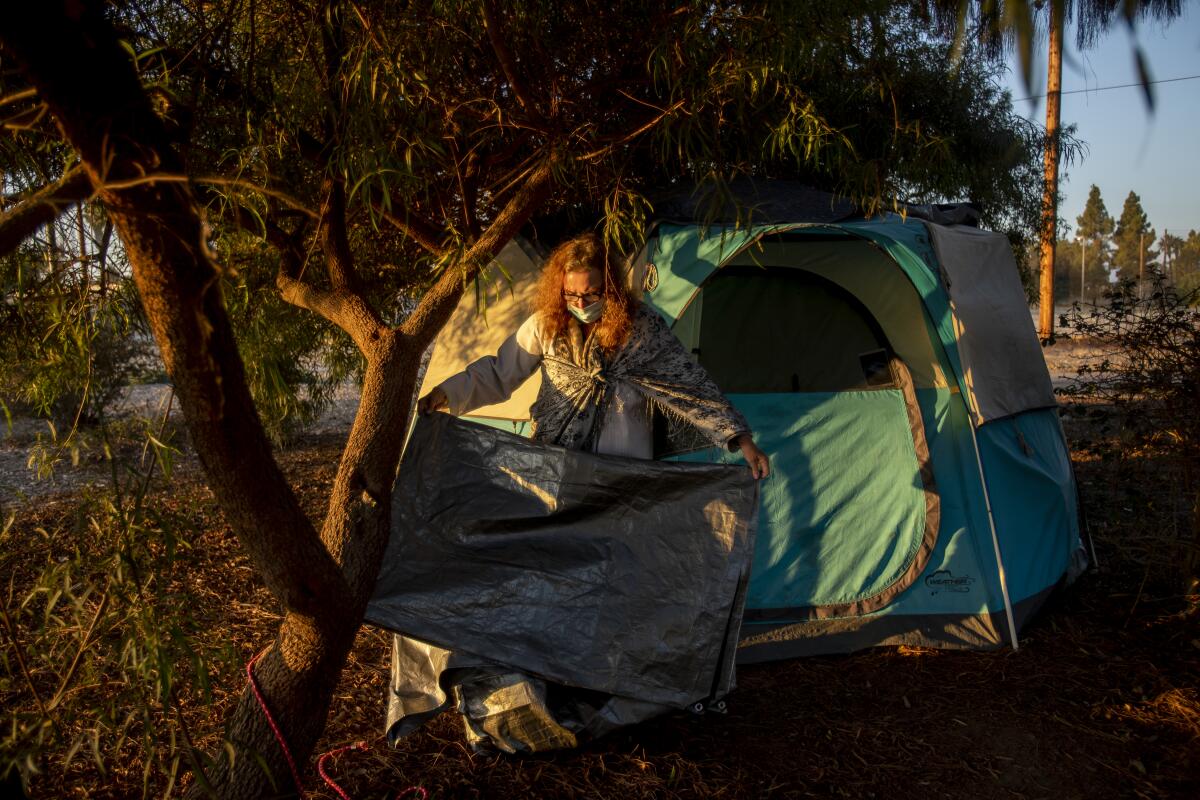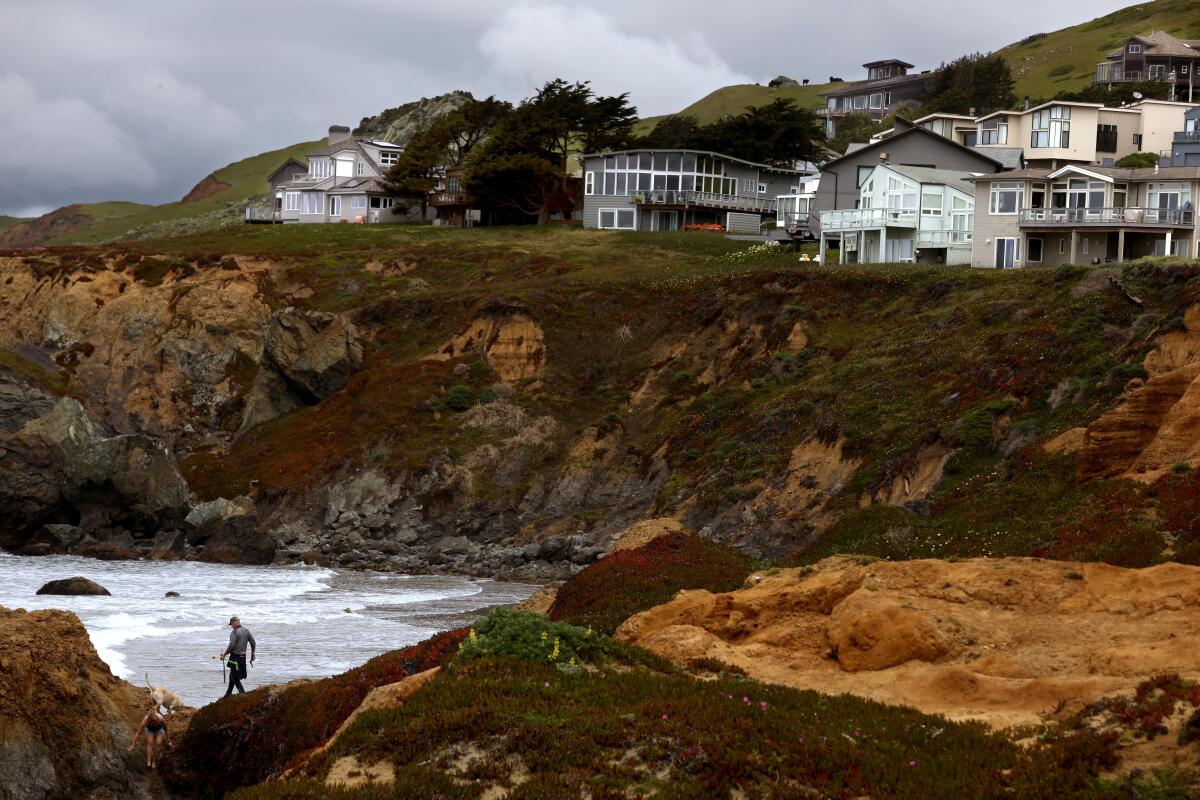More older Californians are falling into homelessness. A new study examines why

- Share via
Good morning. It’s Tuesday, May 28. Here’s what you need to know to start your day.
- A new study examines homelessness among older Californians
- A tree-killing beetle is decimating Southern California’s oaks
- 24 superb things to do around L.A. to kick off the summer of 2024
- And here’s today’s e-newspaper
You're reading the Essential California newsletter
Our reporters guide you through our biggest news, features and recommendations every morning
You may occasionally receive promotional content from the Los Angeles Times.
A new study examines homelessness among older Californians
If you’ve been following the news in recent decades, it’s no surprise that the Golden State is the U.S. capital for homelessness. And among the Californians experiencing homelessness, the group rising the fastest by proportion is older adults — defined as anyone 50 and older.
A major study on homelessness in California, released last year by UC San Francisco’s Benioff Homelessness and Housing Initiative (BHHI), includes two notable findings: 48% of all unhoused single adults in the state are 50 or older and 41% of unhoused older adults became homeless for the first time after age 50.
Now a follow-up study from BHHI researchers dives further into that alarming trend, which they note is expected to continue as “the proportion of people age 65 and older experiencing homelessness in the United States [is] expected to triple between 2017 and 2030.”
The new report, titled “Toward Dignity: Understanding Older Adult Homelessness,” explores how older adults lost housing, what their lives have been like since, and the barriers they face to get back into housing. The authors also include policy recommendations to address the crisis.
“We are failing our older adults by allowing them to spend their last years on our streets and in our shelters,” Margot Kushel, director of BHHI and the study’s lead author, said in a news release. “The dramatic rise in homelessness among older adults has severe consequences for the health and safety of those who experience it, and for our society at large. Now is the time for investments in real solutions to prevent and end homelessness among this vulnerable population.”
The study builds off what BHHI called the largest representative study of homelessness in decades, which traced the “causes and consequences” of homelessness in the state and challenged myths about unhoused people. Researchers surveyed nearly 3,200 people experiencing homelessness across eight California counties in the state and conducted in-depth interviews with 365 of those participants.
One common misconception you might have heard: Unhoused people are moving to California in droves.
According to the study, 91% of older homeless adults in the state lost their last stable housing in California, and more than 75% were last housed in the same county where they were currently experiencing homelessness.
“Older homeless adults’ lives have been marked by deep poverty and trauma,” the authors wrote. More than two-thirds of those surveyed reported experiencing physical violence and 19% reported experiencing sexual violence — many before age 18.
“People who experience homelessness have higher rates of mental health conditions and substance use than the general population,” the authors wrote, adding that many of those struggles existed before those individuals lost housing.
More than 80% of unhoused older adults said they’d experienced at least one significant mental health symptom at some point in their lifetime. The most common symptoms were related to anxiety and depression.
Researchers included a quote from one unhoused 57-year-old woman, who shared:
“I’ve felt like walking in front of the train every day for the last three years since I lost my house… It’s the first time I’ve ever contemplated suicide ever in my life. I’m always upbeat and I’m such a positive person until I got out here…Everything is so hard, just my age and just physically… I hurt all the time and I’m in pain and everything is just a struggle, just to do laundry, just to, you know, food. The younger crowd seems to do better, but I’m older and it’s hard. It’s just hard…”
Here are a few more key findings from the report:
- According to the report: “Being single is a risk factor for homelessness.” Of the older adults surveyed, 52% were single and never married; 17% reported being married or partnered. More than a quarter were divorced or separated, and 4% were widowed.
- “More than 80% of older adults entered homelessness from housing: 46% from non-leaseholding arrangements and 35% from leaseholding arrangements. The other 19% entered homelessness from institutions, which included time in jail, prison or healthcare settings.
- Poor health is a common reality among older adults experiencing homelessness. More than two-thirds reported having at least one significant chronic health condition. About a quarter of those surveyed said they’d experienced a time when they couldn’t get healthcare or obtain medication they needed.
- While people of color are overrepresented overall within the state’s unhoused population, older Black adults are particularly overrepresented. The report notes that 31% of older adults experiencing homelessness identified as Black, compared with 6% of all Californians age 50 or older. Older adults who identified as Native American or Indigenous and multiracial were also overrepresented, the survey found.
- The majority of older adults surveyed expressed optimism that “well-timed financial support would have staved off homelessness,” the authors wrote. Many believed that a modest monthly subsidy ($300 to $500), a one-time payment ($5,000 to $10,000) or something akin to a housing voucher would have allowed them to stay in their homes.
The study’s authors recommended policies meant to “reduce and end homelessness among older adults.” Those include increasing the state’s dismal stock of affordable housing and removing barriers that older adults have in navigating complex programs and processes.
The authors also called on policymakers to strengthen eviction protections and do more to prevent older adults who exit jails and prisons from ending up on the streets, noting that many in that population are entering homelessness “directly from institutional settings.”
Other recommendations included increasing incomes for older adults in extreme poverty, expanding outreach to older adults experiencing homelessness and prioritizing racial equity within the systems that respond to homelessness.
As we covered in this newsletter last month, those systems are struggling, and lasting solutions are difficult to achieve. And even though the state has poured billions of dollars into programs meant to reverse our nation-leading homelessness, we have little to show for it — and don’t really know how well all that money is being spent.
Today’s top stories

COVID in California
- COVID is rising in California. Here’s how to protect yourself from FLiRT subvariants.
- Early signs of rising COVID in California as new FLiRT subvariants dominate.
Remembering Bill Walton
- Bill Walton, UCLA legend, NBA star and Pac-12 advocate, dies at age 71.
- Appreciation: Bill Walton’s kindness and wonderful wackiness made us the grateful ones.
Crime
- ‘General Hospital’ actor Johnny Wactor’s slaying during L.A. theft sparks shock, anger, mourning.
- A 14-year-old girl out walking on the holiday weekend in Newport Beach is fatally struck by a car.
More big stories
- UCLA and UC Davis brace for strike as union alleges free speech violations in pro-Palestinian protests.
- Hollywood crews in ‘crisis’: ‘Everyone’s just in panic mode’ as jobs decline.
- A tree-killing beetle is on a death march through Southern California’s oaks. Can it be stopped?
- Ocean technology hub AltaSea blooms on the San Pedro waterfront.
- Mike Tyson is ‘doing great’ after a medical emergency on a flight to L.A.
Get unlimited access to the Los Angeles Times. Subscribe here.
Commentary and opinions
- Doyle McManus: Trump fans say he speaks his mind. But on some subjects, he’s as slippery as an eel.
- George Skelton: Unaffordable homeowner’s insurance is leaving Californians exposed to the elements.
- Anita Chabria: What I got wrong in the ‘bad built’ blowup.
- Editorial: Metro’s ‘surge’ of police isn’t the long-term solution L.A. needs for safer buses and trains.
- LZ Granderson: LeBron James is the aging icon we all need.
- Jenn Harris: At my favorite new restaurant, the room is red and the chef is a doctor.
- Jonah Goldberg: What’s convincing voters that the economy is worse than it ever was?
- Mark Z. Barabak: Will abortion rights boost Biden and fellow Democrats? Arizona offers a test case.
Today’s great reads
City National is Hollywood’s ‘Bank to the Stars.’ Now a lawsuit says it aided a Ponzi scheme. City National Bank has been sued for nearly $800 million for allegedly bankrolling a Hollywood Ponzi scheme, the latest in a series of controversies involving one of L.A.’s best-known banks.
Other great reads
- How the small screen breathes new life into classic film noir.
- Artists priced out of Los Angeles head to this creative hub in the high desert.
How can we make this newsletter more useful? Send comments to [email protected].
For your downtime

Going out
- 🏖️ 24 superb things to do around L.A. to kick off the summer of 2024.
- 🥾For your L.A. bucket list: An epic city hike that has it all.
- ⛰️ The 101 best West Coast experiences.
Staying in
- 📺 Ricky Martin is livin’ the good life back in front of the camera in ‘Palm Royale’ on Apple TV+.
- 🍪 Here are 9 of our favorite cookie recipes for baking right now.
- ✏️ Get our free daily crossword puzzle, sudoku, word search and arcade games.
And finally ... a great photo
Show us your favorite place in California! We’re running low on submissions. Send us photos that scream California and we may feature them in an edition of Essential California.

Today’s great photo is from Times photographer Genaro Molina at Dillon Beach, one of the few communities that will be allowed to grow its short-term rental market under a new Marin County ordinance.
Have a great day, from the Essential California team
Ryan Fonseca, reporter
Kevinisha Walker, multiplatform editor and Saturday reporter
Check our top stories, topics and the latest articles on latimes.com.
Sign up for Essential California
The most important California stories and recommendations in your inbox every morning.
You may occasionally receive promotional content from the Los Angeles Times.





